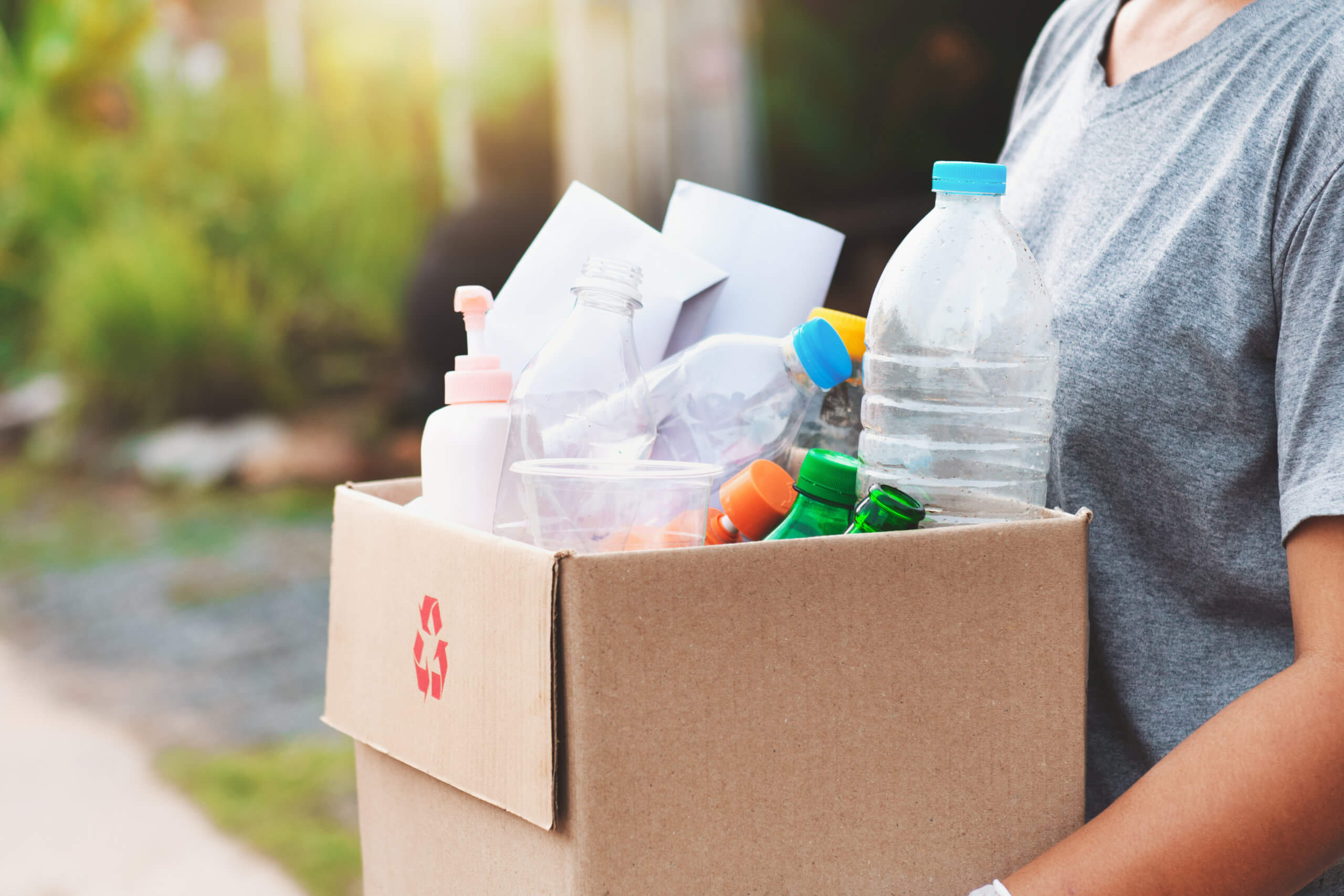
“Plastic bags aren’t recyclable.”
FACT: Plastic bags are reusable AND recyclable.
Plastic bags are recyclable, and in most cases are already reused and recycled by consumers. The plastics industry is working with the businesses that use plastic bags to ensure that consumers have the tools to recycle them. Many grocery chains in the United States have drop-off bin programs that reuse single-use plastic bags. In fact, a study conducted by Moore Recycling Associates found that over 90 percent of the U.S. population living in cities with a population of over 125,000 has access to these types of recycling systems already.
These programs are just the beginning. With additional recycling infrastructure investment and development, plastic bags can be recycled from consumers’ homes. Curbside recycling already exists in most cities around the country, and innovative, advanced recycling infrastructures can be used to separate and break down materials directly from bins.


“Traditional recycling is the industry’s only solution—and it’s not enough.”
FACT: Many types of recycling address plastic waste.
While traditional curbside or drop-off recycling programs are the most common forms of recycling for the average American consumer, these are no longer the only types of recycling, nor do they represent the most cutting-edge option.
Advanced recycling solutions available today ensure that some plastics can be endlessly recycled. For example, chemical recycling, pyrolysis and gasification break down polymers into their original molecules, or monomers. Advanced recycling solutions can even generate more recycled content to better serve communities and businesses by repurposing hard-to-recycle products. For example, Agilyx, an alternative energy company, recycles polystyrene (which most people know as Styrofoam™) into high-value petrochemicals. Agilyx’s polystyrene recycling process creates like-new materials while generating fewer greenhouse gases than manufacturing does.
Advanced recycling solutions can change our recycling landscape and have already started to do so. Partnerships and additional collaboration are needed to deliver a truly circular economy for recycling, from the producer and manufacturer to the consumer and, ultimately, the recycler.


“Recycled plastic is weaker and less durable.”
FACT: Recycled plastic is strong, durable, lightweight and easy to mold.”
Plastics have all the key properties necessary for use as heavy-duty materials. When recycled, plastic bags in particular can be made into plastic lumber that is used to make park benches, backyard decks and fences – even playground equipment.
The New End Market Opportunities (NEMO) for Film Asphalt Project is another example of the unique cradle to cradle lifecycle plastics can have, repurposing plastic retail bags to pave parking lots. The industry-led project centers efforts around extending the life of plastic waste, incorporating recycled polyethylene (rPE) into the formulation of hot asphalt. This new mixture uses a “dry process” where rPE is a solid additive during the asphalt mixture manufacturing process. The final product offers many of the same benefits of traditional polymer-modified asphalt, including improved performance and lifespan, all at a decreased cost.


“The plastics industry isn’t making recycling better or easier.”
FACT: Industry is a vital partner in developing recycling solutions.
The U.S. plastics industry is a global leader in innovative recycling solutions and circular economy partnerships. The initiatives below show that multi-stakeholder collaboration is already solving waste challenges today.

The U.S. industry’s continued leadership in infrastructure investment—particularly its commitment abroad in developing countries where the needs are even greater—will continue to improve global waste management and further work to create a circular economy.


“Recycling rates are falling.”
FACT: Recycling rates are rising thanks to industry leadership.
Recycling rates continue to grow despite increased consumer demand for harder-to-recycle products. According to the U.S. Environmental Protection Agency, the U.S. recycling rate for PET plastics, which package many of our food and beverages, including plastics bottles, increased from 2 percent in the 1980s to more than 24 percent in 2018. This is thanks to traditional recycling programs and the plastics industry’s increasing use of advanced recycling solutions coupled with industry initiatives like the Every Bottle Back campaign supported by the American Beverage Association. Initiatives like this help raise awareness and increase education about how consumers can better recycle plastic.


“Recycling does not contribute to local economies.”
FACT: Recycling drives local economic growth and emissions reductions.
Recycling benefits local economies by reducing greenhouse gases, creating new jobs and returning materials to manufacturers – which further reduces waste – that can more than cover the cost of collecting and processing recyclables.
For example, recycling in Minnesota supports 60,000 jobs, accounts for nearly $3.4 billion in wages, and adds about $15.7 billion to the state’s economy. However, there is still untapped opportunity: even with these positive numbers, Minnesota is still throwing away 850,000 tons of recyclables, with an estimated value of $153 million. The products that slip through the current recycling system provide a massive opportunity for local economies to reclaim recycled goods to add even more jobs and dollars to the economy.
Consumers can help. Reducing consumption of non-recyclable products and ensuring that products are properly recycled will increase the buy-in for recycling systems that will add to the economy. This model can be replicated across the United States to increase economic activity and bring more jobs to different areas.

